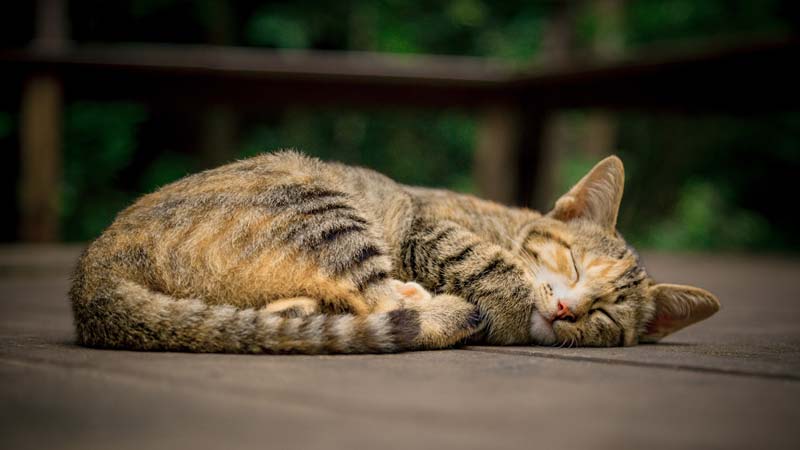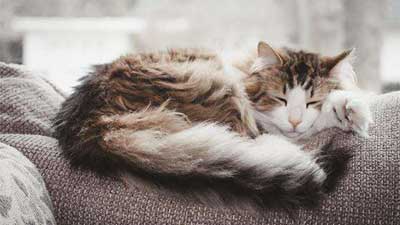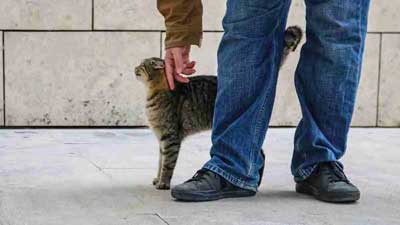Why Do Cats Take Cat Naps?

Photo by Ash Edmonds on Unsplash
Cats, those enigmatic and elegant creatures, have captured the hearts of pet lovers everywhere with their innate love for napping. The sight of a contented cat curled up, peacefully dozing away, is an image that invokes a sense of tranquility and fascination. But what lies behind their deep affinity for sleep, and what factors contribute to their unique rest habits?
In this article, we will delve into the art and science of cat napping, exploring the various aspects that shape their sleeping patterns and shedding light on this intriguing feline behavior.
The Art of Cat Napping
It's no secret that cats are sleep aficionados, spending a considerable portion of their day in slumber. On average, a cat can snooze for an impressive 12 to 16 hours daily. This seemingly excessive sleep regimen is deeply rooted in their evolutionary history and nocturnal nature.
Understanding Feline Sleep Cycles
Cats are crepuscular by nature, meaning they are most active during dawn and dusk. As natural predators, their sleep-wake patterns align with their hunting instincts, allowing them to conserve energy during the day for their nocturnal adventures. This preference for napping during daylight hours is a hallmark of their survival strategy.
Age and Sleep Patterns
The age of a cat significantly influences its sleep patterns. Kittens, in particular, spend an extensive amount of time sleeping—sometimes up to 20 hours a day! This extended sleep is essential for their growth and development. On the other end of the spectrum, senior cats also tend to sleep more, prioritizing rest for rejuvenation.
Factors Affecting Cat Naps
Several factors influence a cat's sleep routine. Breed, age, activity level, and overall health play crucial roles in determining the amount of sleep a cat needs. Active and younger cats might have shorter nap durations compared to their more sedate counterparts. Monitoring these variations helps pet owners understand and cater to their feline companion's individual needs.
Recognizing Normal Sleep Habits
While cats are known for their love of naps, any drastic changes in their sleep patterns should prompt attention. If your cat is sleeping significantly more or less than usual, consulting a veterinarian is advisable. Such deviations from their typical routines could indicate an underlying health issue that requires professional assessment.
Creating a Restful Environment
Understanding a cat's affinity for sleep allows pet owners to create a conducive environment for their furry companions. Providing cozy, comfortable spots and maintaining a consistent routine supports their need for rest and relaxation. Creating a peaceful atmosphere ensures cats can indulge in their love for napping without disruptions.
Promoting Feline Well-being
A cat's sleep routine is a reflection of their overall well-being. Ensuring they have a safe and comfortable environment, along with mental and physical stimulation, contributes to their contentment. Interactive play, scratching posts, and access to stimulating toys during their active hours can promote better sleep quality.
Conclusion
From their evolutionary history as nocturnal hunters to their crepuscular nature, cats are hardwired to embrace sleep as a means of conserving energy. Their sleep patterns evolve as they mature, with kittens requiring extensive sleep for growth and development, and senior cats prioritizing rest for rejuvenation.
So, the next time you catch your cat curled up in a peaceful slumber, take a moment to appreciate the intricacies of their love for napping. Embrace their unique sleep patterns, create a cozy environment, and cherish the tranquil moments of feline contentment. After all, the world of cat naps is a wonderful one, where dreams and relaxation intertwine to create an enchanting experience for our beloved furry friends.
You May Also Like
 Cat BehaviorIs A Cat Happy When It Is Purring?
Cat BehaviorIs A Cat Happy When It Is Purring? Cat BehaviorCat Likes To Sleep Around You, There Is These 6 Reasons
Cat BehaviorCat Likes To Sleep Around You, There Is These 6 Reasons Cat BehaviorPossible Reasons for Cat Slapping You With Her Tail
Cat BehaviorPossible Reasons for Cat Slapping You With Her Tail Help & AdviceTo Keep Your Cat Live Longer, These 8 Factors Must Be Paid Attention To
Help & AdviceTo Keep Your Cat Live Longer, These 8 Factors Must Be Paid Attention To Cat GroomingTips and Tricks on How to Take Care of Your Cat
Cat GroomingTips and Tricks on How to Take Care of Your Cat Ranking Lists10 Cat Breeds That Live the Longest (Ranked)
Ranking Lists10 Cat Breeds That Live the Longest (Ranked)